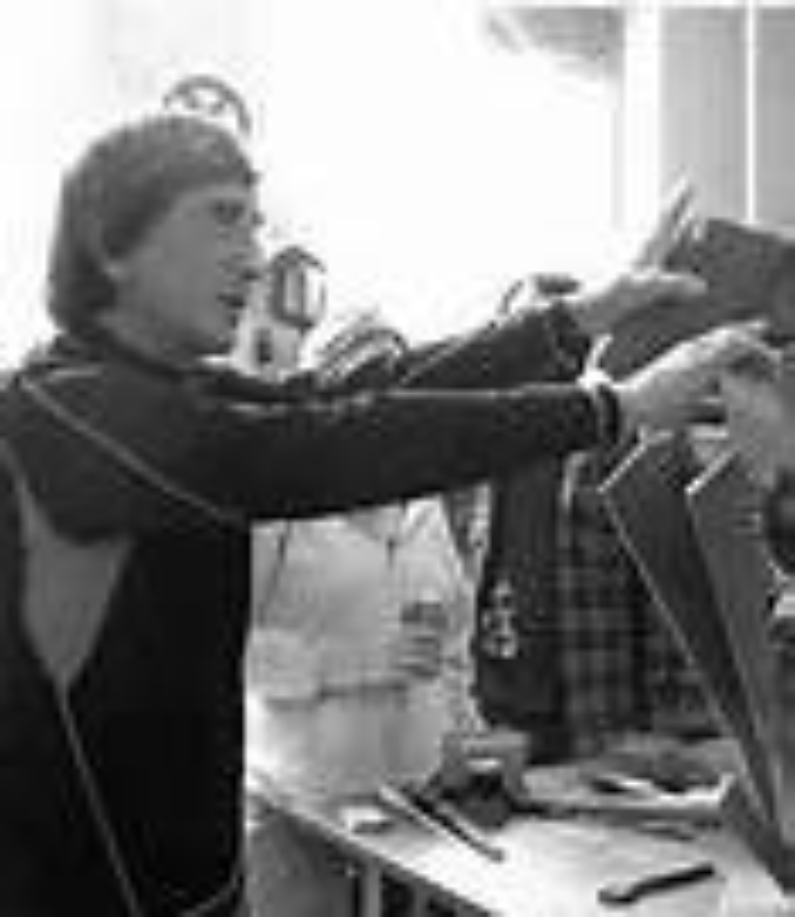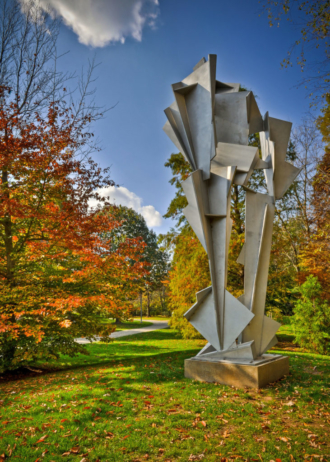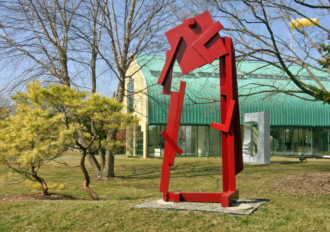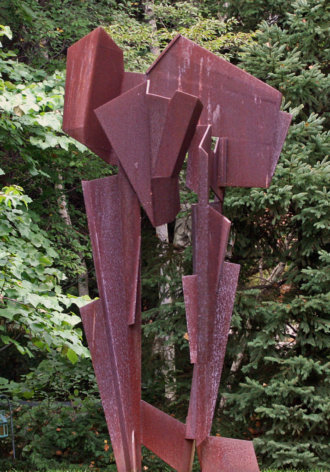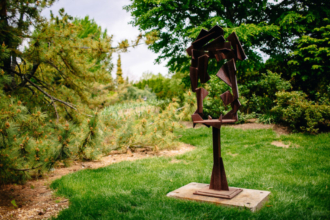For Joel Perlman, sculpting is an adventure and each work is the record and result of an exploration of weight, danger, negative space, and monumentality. His process is one that is tied closely to the materials and to the construction and deconstruction that take place during the creation of his sculpture. Perlman often starts by cutting shapes, primarily out of steel, and then welds them together to create the sculpture. About the process of welding, Joel Perlman has said, “I was immediately transfixed by the whole process. The raw power at your disposal, that you could take two pieces of metal, there would be a flash and a buzz, and suddenly they’re one single piece…I felt I’d found a work process that could keep up with my thought process.” The obvious joining lines, surface nicks and scratches record the process of creation, are evidence of the hand of the artist, and articulate a relationship between painting and sculpture. There are no preliminary drawings, for Perlman sees his work as evidence of a process, and the result of an activity. Perlman’s sculptures contain an acknowledged influence of Russian Constructivism in their glory of the geometric form. His works are also known for the central, open spaces that are integral to his work. These negative spaces help define the work and are as important to Perlman as the sculpture itself.
Joel Perlman was born in New York in 1943. While an undergraduate student at Cornell University, he learned to weld by taking adult education classes off-campus. This activity became a great influence as he learned alongside bikers, farmers and truck drivers. He earned a BFA at Cornell University, Ithaca, NY in 1965, and an MA degree from the University of California, Berkley in 1967. Perlman has been an instructor at the School of Visual Arts in New York City since 1973. Selected awards include a National Endowment for the Arts fellowship in 1979; The Special Prize from the second Fujisankei Biennale; and Japan Commission for the Tenneco World Headquarters, in 1995. His work is included in the public collections of the Hirshhorn Museum and Sculpture Garden, Washington, D.C.; the Metropolitan Museum of Art in New York City; Storm King Art Center, Mountainville, NY; and the Ursukushi-Ga-Hara Open Air Museum, Japan.
